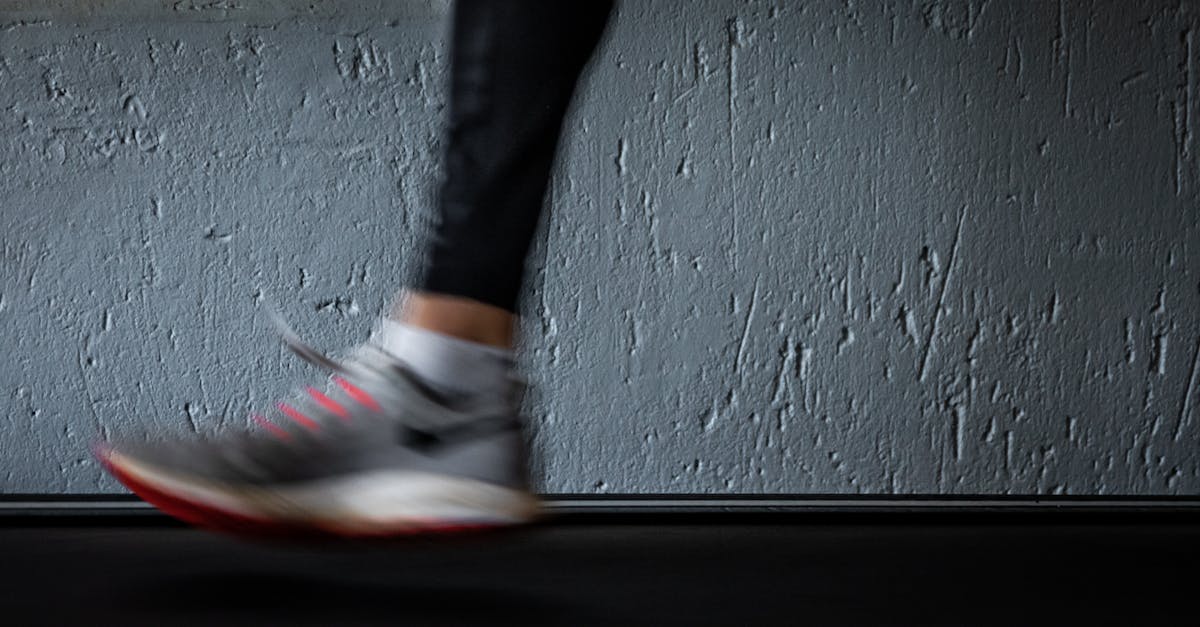
Tools Required for Treadmill Safety Checks
Table Of Contents
Safety Gear for Inspectors
Inspectors prioritising safety should wear appropriate gear during treadmill evaluations. High-visibility vests enhance visibility in dimly lit gyms or fitness centres. This ensures that both the inspector and the surrounding personnel are aware of their presence. Moreover, sturdy footwear provides reliable support and protection against any potential mishaps during inspections.
In addition to basic attire, personal protective equipment such as gloves and safety glasses is essential. Gloves protect hands from sharp edges and moving parts while safety glasses shield eyes from debris and dust. This combination of equipment not only promotes individual safety but also instils confidence in the inspection process itself.
Gloves and Safety Glasses for Personal Protection
Ensuring personal safety during treadmill inspections is of utmost importance. Inspectors should wear gloves that provide a firm grip and protect against sharp edges, dust, and mechanical components. These gloves should be durable yet flexible enough to allow for the handling of various tools and equipment. High-visibility gloves can further enhance awareness of hand positioning when working on or near moving parts, minimising the risk of injury.
Safety glasses are essential when performing checks on treadmill mechanisms. Protective eyewear shields the eyes from debris, dust, and potential splashes of lubricants or cleaning agents. Selecting glasses with anti-fog and scratch-resistant properties can improve visibility during inspections, especially in environments where the equipment is regularly used or maintained. Both gloves and safety glasses contribute significantly to a comprehensive safety approach, allowing inspectors to conduct their work efficiently and with confidence.
Diagnostic Software
Utilising advanced diagnostic software is essential for effective treadmill inspections. This type of software enables technicians to assess performance metrics, record data, and identify potential issues with efficiency. Some applications come equipped with features for real-time monitoring, allowing for immediate analysis during the inspection process. This not only streamlines the evaluation but also ensures that any deviations from expected performance can be addressed swiftly.
In addition to performance monitoring, diagnostic software often includes user-friendly interfaces that simplify data interpretation. Many applications allow integration with various types of treadmills, making it easy to customise settings according to specific models. This versatility enhances the technician's ability to pinpoint problems and recommend appropriate maintenance actions. Overall, leveraging this technology improves safety outcomes and prolongs the lifespan of equipment.
Treadmill Performance Monitoring Applications
Various software applications designed specifically for treadmill performance monitoring assess the functionality and safety of these machines. These tools allow users to track metrics such as speed, incline, and calorie burn. By integrating with fitness equipment, they provide real-time data that can help identify any irregularities in operation. This ensures that the machinery functions within its intended parameters and notifies users of potential issues.
Some applications offer additional features, like performance history analysis and maintenance reminders, enhancing the overall user experience. Moreover, advanced diagnostic tools within these applications can detect anomalies in performance, helping technicians pinpoint problems swiftly. This capability is crucial in maintaining treadmill safety, ensuring that equipment remains reliable and efficient for users.
Measurement Instruments
Accurate measurements are crucial when conducting safety checks on treadmills. A tape measure is an essential tool for determining the deck length and width. This ensures that the equipment meets the manufacturer specifications and is appropriate for the intended user. Regular checks of these dimensions help in identifying any significant wear or damage that could impact safety and performance.
In addition to a tape measure, other measurement instruments can enhance inspection efficacy. For example, a digital multimeter can be used to test electrical components, ensuring proper functionality and safety of the device. Calibrated weights may also be utilised for load testing, verifying that the treadmill can support the intended user weight without compromising safety. These tools contribute to a comprehensive safety assessment.
Tape Measure for Deck Length and Width
A tape measure is essential for assessing the dimensions of a treadmill's deck, as accurate measurements ensure proper usage and safety. This tool allows inspectors to determine the length and width, which are critical for both user comfort and effective operation. An adequate deck size accommodates different stride lengths and running styles, catering to a wide range of users.
When measuring, ensure the tape is straight and taut to achieve precise readings. This accuracy is crucial not only for safety checks but also for maintenance purposes, as some treadmills have specific deck size requirements outlined in their manufacturer guidelines. Regular inspections using a tape measure help identify any discrepancies that could affect performance or lead to accidents.
FAQS
What safety gear should inspectors wear while performing treadmill safety checks?
Inspectors should wear gloves and safety glasses to ensure personal protection during the inspection process.
Why is diagnostic software important for treadmill safety checks?
Diagnostic software helps monitor treadmill performance, allowing inspectors to identify any issues or malfunctions effectively.
What type of applications can be used for treadmill performance monitoring?
Treadmill performance monitoring applications are specifically designed to track metrics such as speed, incline, and overall functionality, which are crucial for safety checks.
How can a tape measure be used during treadmill safety checks?
A tape measure is used to determine the length and width of the treadmill deck, ensuring it meets safety standards and is suitable for user requirements.
Are there any other tools necessary for treadmill safety checks?
In addition to safety gear, diagnostic software, and measurement instruments, inspectors may also need tools like wrenches, screwdrivers, and lubricant for maintenance checks.
Related Links
How to Ensure Your Treadmill is Safe to UseChecklist for Treadmill Safety Inspections
The Role of Regular Inspections in Treadmill Longevity
Common Safety Hazards to Look for in Treadmills
Frequency of Treadmill Inspections: What You Need to Know
Understanding Treadmill Safety Features